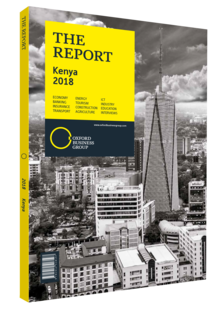Kenyan real estate to benefit from increased low-cost housing and healthy credit growth
Bridging Kenya’s affordable housing deficit was one commitment made by President Uhuru Kenyatta when he announced his Big Four agenda in 2017. Specifically, a goal was laid out to add up to 500,000 affordable housing units to the nation’s stocks during this second term in office, which ends in mid-2022. The policy could prove to be a key driver of change, according to Palkesh Shah, director of local real estate firm Chigwell Holdings. “The new plan from the federal government to build such a significant number of affordable homes is a welcome development, since this is the segment that holds real potential for growth,” he told OBG. Kenya’s housing deficit is estimated at around 2m units, though current production is only adding 50,000 per year.
Embarking on the plan, in January 2018 the government shortlisted 35 private construction firms to participate in the tendering process for a pilot project of its KSh2.6trn ($25.5bn) affordable housing programme. The trial scheme involves building over 8000 two- and three-bedroom homes on a 22-ha site in Mavoko, Machakos County. The companies will execute the work under engineering and procurement contracts. The government has said that the selling price for some of its affordable units will be as low as KSh500,000-700,000 ($4900-6860), though three-bedroom units may sell for up to KSh3m ($29,400).
Rents & Sale Prices
As the government laid out plans to address the shortfall in affordable housing, 2017 brought breaks for other classes of Kenyan society as well. The broader macroeconomic environment and saturation in higher-end segments of the market placed downward pressure on average rents and sale prices, making them more affordable for middle- and upper-middle-income residents.
Nationwide rents for all types of residential dwellings fell by 3.9% in 2017, and by 1.2% in the fourth quarter alone, according to a January 2018 report by local realtor HassConsult. Sale prices, meanwhile, dropped by 4.1% during 2017. An oversupply of large family-sized apartments in Nairobi was cited as one reason for declining rents, while tighter liquidity conditions and high inflation were given as factors curbing overall growth and returns in the sector.
However, after a year of falling prices, residential rents across the country rose by an average of 3.3% quarter-on-quarter in the second three months of 2018, and sale prices increased by 3.6%. Indeed, the January report noted that rises in land and property sales in some districts of Nairobi were anticipated on the back of infrastructure developments, including connectivity upgrades. One of these is the expansion of the capital’s 13-km Outer Ring Road, which was 92% complete and had cost KSh7.4bn ($72.5m) as of July 2018, according to the Kenya Urban Roads Authority.
Credit Scene
Moves by the government and private developers alike to support home ownership across all income segments have resulted in positive credit growth as of late. According to the January-March 2018 credit survey by the Central Bank of Kenya (CBK), 21% of banks recorded a quarterly rise in real estate lending in the first three months of the year, compared to 24% of banks in the fourth quarter of 2017. The share of banks that saw quarterly increases in the seven periods from July 2016 to March 2018 averaged 26.5%.
In another boon for the market, the number of non-performing loans in the real estate sector fell from 49% in the third quarter of 2017 to 31% in the final months of the year, and remained largely unchanged at 32% in the first quarter of 2018.
Significantly, construction is one of the other 11 sectors analysed by the CBK that has been recording strong credit demand in recent quarters. In the January-March 2018 period 26% of banks registered an increase in loans disbursed to the building industry and 29% of institutions experienced the same in the fourth quarter of 2017. Credit growth is expected to be sustained in both sectors as more units are built and sold under public and private housing initiatives.
You have reached the limit of premium articles you can view for free.
Choose from the options below to purchase print or digital editions of our Reports. You can also purchase a website subscription giving you unlimited access to all of our Reports online for 12 months.
If you have already purchased this Report or have a website subscription, please login to continue.

